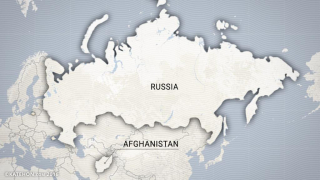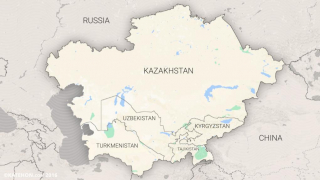The “water” conflict in Central Asia
Hot spots around glaciers
For the former Soviet republics of Central Asia, as well as Afghanistan, Iran and Xinjiang, the availability of water has always been a guarantee of prosperity and a comfortable existence; after all, agriculture in the region depends almost entirely on irrigation during the active growing season of crops. That is why disputes, and sometimes armed conflicts, flare up here precisely because of the “life-giving moisture.” In the last 30 years alone, these include: a border conflict between Tajikistan and Kyrgyzstan over the waters of the Isfara River; threats by Uzbekistan to occupy the Kayrakkum hydropower plant in Tajikistan to provide irrigation for Uzbek fields in 2012; last year's conflict over a reservoir on the Uzbek-Kyrgyz border that almost led to the resignation of the government in the latter of these countries; and the border conflict that took place in 2022 on the Afghan-Iranian border.
Here it is time to mention that it is Tajikistan and Kyrgyzstan that are the largest “holders” of fresh water in the region. First, there are huge reservoirs containing many cubic kilometers of fresh water in these mountainous countries, thanks to the hydroelectric power plants built in Soviet times on the Vakhsh and Naryn rivers. But even more important is the fact that dozens of large and not-so-large rivers originate on the territory of these countries, feeding fields in their lower course in the fertile but arid plains of neighboring countries.
Most of the significant rivers in Central Asia originate in high mountains and are fed in their upper course mainly by meltwater from mountain snows and glaciers. From the point of view of agriculture, glacier-fed rivers are of particular value, as the higher flow observed in the warmer period coincides with the higher demand for water for irrigation purposes.
However, the planet is warming, glaciers are melting faster, and less snow is falling. For the consuming countries of the Eurasian Plain-Uzbekistan, Turkmenistan, Kazakhstan, most of Afghanistan, Xinjiang, and Iran, where the population is growing exponentially-the supply of “life-giving moisture” becomes a key issue.
There are more than two thousand glaciers in Central Asia with a total area of 11,000 km2, and most of them are located in Tajikistan. One of the largest among them is the Fedchenko Glacier located in the Pamir (its length is 77 km, its width is 2-5 km, and its water reserve is at least 114 km3)-along with many of its “little brothers,” it feeds the flow of the great Amu Darya. In the upper part of Zeravshan (between the Turkestan and Zeravshan ranges) is another giant: the Zeravshan Glacier (about 25 km long and with an area of 8 km2). However, their resources are not unlimited. Without going into the subtleties of glaciological characteristics, it can be said that in the first half of the 20th century the area of glaciers in Tajikistan decreased by about one third, and this process is accelerating. All this can only cause concern among consumer states, which often takes the form of reproaches and threats against their “high mountain” neighbors.
Striking first
Add to this the fact that when it comes to building new hydropower plants on the main rivers of Tajikistan and Kyrgyzstan, anxiety is replaced by blackmail and blocking the transportation of supplies of construction materials and special equipment. Of particular nervousness in Uzbekistan is the continuation of the construction of the Rogun hydropower plant, begun back in 1976, a very expensive and capital-intensive project with a capacity of 3780 MW (6 hydropower units of 630 MW each). Providing the most efficient operation of the waterfall, the Rogun hydroelectric power plant will be the largest on the Vakhsh River. With its commissioning, it will be possible to fully develop the water and energy potential of this river, the fullest tributary of the Amu Darya. By implementing long-term flow regulation, Rogun HPP will not only increase the total electricity production of the cascade of hydropower plants on the Vakhsh River, but more importantly, it will enable it to generate baseload power, which will be mainly of regional importance. Three years ago, the first power unit was already activated here.
The following hydropower units and other electromechanical equipment will be manufactured, delivered, installed and handed over on a turnkey basis by the Austrian company Voith Hydro, with whom an international contract worth 370 million euros was signed in January 2021.
The construction of this hydroelectric giant since the collapse of the USSR has provoked a very tense reaction in Uzbekistan, which at first glance seems strange, given that the project itself was developed in the 1970s in Tashkent. But this is only at first glance. The fact is that the collapse of the Soviet state disrupted mutual economic obligations, which, for example, included not only the seasonal flow of water for irrigation, but also the supply of electricity and natural gas to the fraternal republics. The collapse of the economy brings to mind the “pioneer law”: “first we eat yours and then to each his own.” As a result, in winter, half of Tajikistan sits by candlelight and kerosene lamps, and in summer, Uzbek cotton farmers look longingly at dry canals.
The desire to obtain desired water also leads Uzbekistan to such original requirements as the descent of Lake Sarez, a giant natural reservoir in the Pamirs formed by the 1911 earthquake. It now stores more than seven cubic kilometers of fresh water in its depths and is comparable in value for Tajikistan with Baikal for Russia. In the 1990s and early 2000s, Uzbekistan offered to drain the lake, blackmailing countries in the region with catastrophic flooding if the dam collapsed. The Uzbek side would not listen to Tajik seismologists' exhortations about the indestructibility of the Usoy block, which closes the aforementioned lake on the Bartang River.
Under these conditions, Tajikistan's initiative to hold a water conference under the auspices of the United Nations in 2023 was a bold and decisive step: those who take the initiative to conserve water resources and glaciers can manage the situation as a whole. In this context, the call for the restoration of the Aral Sea was a weak attempt by runoff-consuming states. Uzbekistan has proposed in this regard to create an “Aral Sea Culture and Art Development Fund,” designed to preserve biocultural, cultural and linguistic diversity in the region. It is clear that without filling the shrinking inland sea, the activity of such a fund is meaningless. How to fill it - see above...
In the coming years, the “water” conflict in the region may again intensify due to the creation of an even greater shortage of “life-giving moisture” in Turkmenistan and Uzbekistan: Taliban insurgents are digging a huge Qosh Tepa canal in northern Balkh province to draw water from the Amu Darya.
In their view, the need for this mega-project (285 km long, 100 m wide and estimated at $684 million), whose construction was announced by the Afghan government in March 2022, is caused by the country's need to dry irrigate regions and develop the rural economy. It is scheduled for completion in 2028. Experts rightly fear that solving this task (in which about 300 companies and 6,500 workers are currently involved) will further aggravate the already difficult situation with the region's watershed. In fact, after the completion of the construction, the water consumption of the Amu Darya in Afghanistan could increase from 7 to 17 cubic meters. For Tajikistan, which is upstream of the Amu Darya, canal construction is not a problem, while downstream Uzbekistan and Turkmenistan will lose 15% to 25% of irrigation water from the region's main river.
Unfortunately, today, just like yesterday, the Central Asian states continue to solve problems with the distribution of the “most precious mineral” on our planet in an arbitrary order. And this is done, basically, without regard to the interest of the neighbors.
Original column by Viktor Dubovitsky: https://katehon.com/ru/article/prigovor-lednikovomu-periodu
Traslation by Costantino Ceoldo













